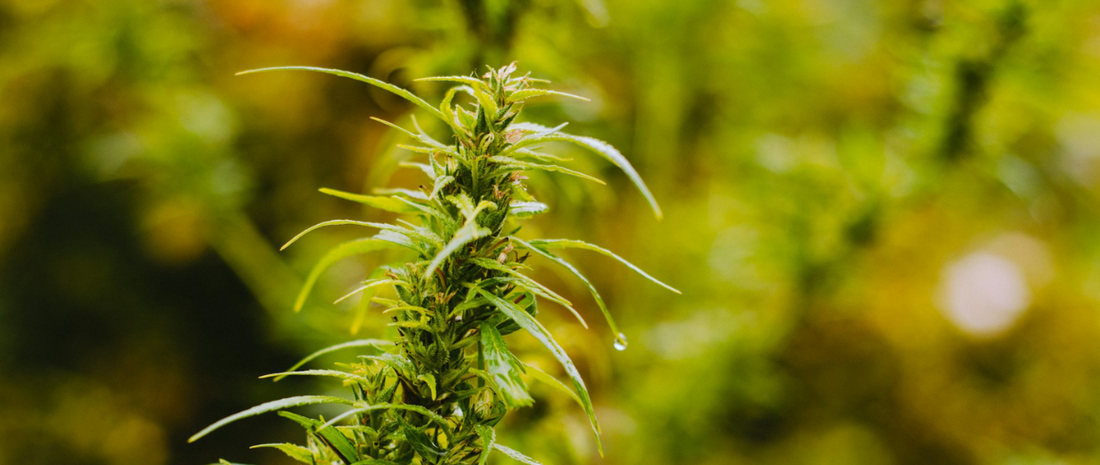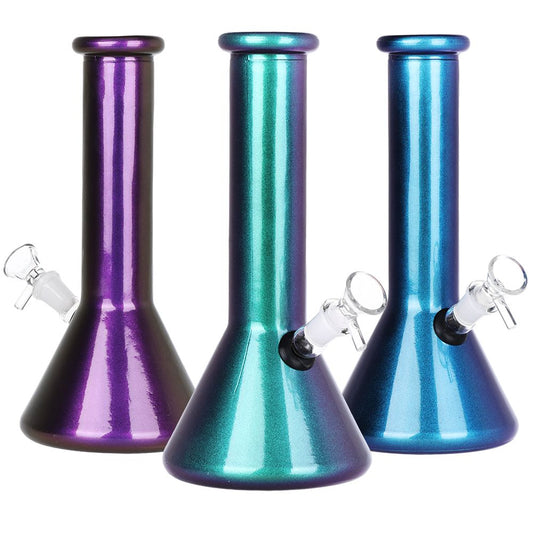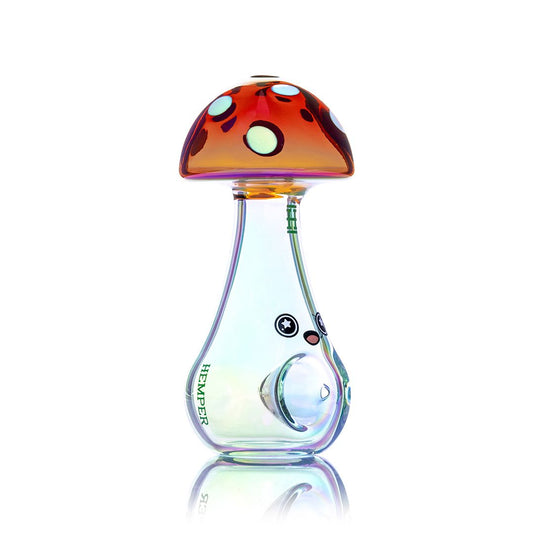
How to Grow Cannabis at Home: A Complete Beginner's Guide to Outdoor Cultivation
Share
We grow our own cannabis for one simple reason: dispensary weed just isn't that good. Sure, legalization was a win, but the commercial rush that followed turned this beautiful plant into another factory-farmed product focused on profit over quality.
The problem is everywhere you look. Sky-high THC numbers that prioritize getting blasted over actual benefits. Harsh chemicals used in extractions. Indoor grow operations that treat cannabis like widgets on an assembly line instead of the sun-loving plant it naturally is.
Here's what surprised us when we started growing: cannabis is incredibly easy to grow. This plant wants to thrive. Give it some sunshine, decent soil, and basic care, and you'll get towering beauties that can reach over 10 feet tall. We grow exclusively outdoors because that's where cannabis belongs—dancing in the breeze under natural light.
Ready to skip the dispensary and grow your own? Here's everything you need to know about cultivating quality cannabis at home.
Why Grow Cannabis at Home?
Home cannabis cultivation offers several compelling advantages:
Cost Savings: Growing your own can save hundreds or thousands of dollars annually compared to dispensary purchases. A single plant can yield several ounces of high-quality cannabis.
Quality Control: You control every aspect of the growing process, from soil selection to nutrient choices. This means no harsh chemicals, pesticides, or artificial additives that commercial growers sometimes use.
Strain Selection: Choose exactly the strains you want rather than being limited to what's available at dispensaries.
Personal Satisfaction: There's something deeply satisfying about nurturing a plant from seed to harvest and enjoying the fruits of your labor.
Legal Considerations: Know Your Local Laws
Important: Before starting any cannabis cultivation, research your local and state laws thoroughly. Cannabis cultivation laws vary significantly by location, with different regulations regarding:
Number of plants allowed
Growing location restrictions (indoor vs. outdoor)
Licensing requirements
Possession limits
Always ensure you're in full compliance with local regulations to avoid legal issues.
Choosing the Right Cannabis Strain for Beginners
Selecting the right strain is crucial for successful home cultivation. As a beginner, prioritize hardy, forgiving strains over high-maintenance varieties.
Best Beginner-Friendly Strains:
White Widow: Extremely resilient and forgiving to growing mistakes
Jack Herer: Fast-growing with excellent pest resistance
OG Kush: Hardy strain with consistent yields
Northern Lights: Perfect for beginners, handles stress well
Indica vs. Sativa: What Really Matters
Don't get caught up in the indica/sativa debate. Instead, focus on practical growing characteristics:
Growing time: How long from seed to harvest?
Plant size: Will it fit your growing space? Some plants can get to be over 6' tall and bushy.
Climate requirements: Does it match your environment?
Yield potential: How much can you expect to harvest?
Research strains through reputable seed banks, which often provide detailed growing difficulty ratings and yield estimates.
Essential Equipment for Growing Cannabis at Home
One of the best things about growing cannabis is that you don't need expensive equipment to get started. Here's what you actually need:
Outdoor Growing Essentials:
Large containers (10-25 gallon grow bags work best)
High-quality potting soil
Organic compost
Basic plant nutrients
Water source
Sunny location (6-8 hours direct sunlight daily)
Germination Supplies:
Paper towels
Small airtight container
Seedling containers (recycled cups work fine)
Pest Control:
Organic pest treatment (BT/Bacillus thuringiensis recommended)
Magnifying glass for inspection
How to Grow Cannabis: Step-by-Step Process
Step 1: Germination (Days 1-7)
The paper towel method is simple and effective:
Dampen a paper towel (not soaking wet)
Place cannabis seeds on the towel
Fold the towel over the seeds
Place in an airtight container
Keep in a warm, dark place (70-80°F ideal)
Check daily and keep moist
Seeds should sprout small white roots in 3-5 days
Once you see roots, it's time to plant.
Step 2: Seedling Stage (Weeks 1-3)
Fill small containers with quality potting soil
Plant sprouted seeds about ¼ inch deep
Keep soil consistently moist but not waterlogged
Provide gentle light (windowsill or weak grow light)
Watch for the first set of "true" leaves to appear
Outdoor tip: If placing seedlings outside, protect them from pests like slugs and pill bugs that love young cannabis plants.
Step 3: Transplanting (Week 3-4)
When plants reach 6-7 inches or outgrow their containers:
Fill your large container with soil and compost mixture
Carefully remove the entire seedling (soil and all)
Plant at the same depth as before
Water gently and monitor for stress signs
Gradually introduce to full sunlight if moving outdoors
Step 4: Vegetative Growth (Weeks 4-12)
This is when your plants really take off:
Watering: Deep, infrequent watering works best. Soil should dry slightly between waterings.
Feeding: Use nitrogen-rich fertilizer during this stage. Coffee grounds make an excellent organic supplement.
Monitoring: Watch for color changes. Healthy plants are vibrant green. Yellow leaves often indicate nutrient deficiency, while brown or wilted leaves suggest watering issues.
Growth Management: Cannabis plants can reach 8-9 feet tall. Consider "topping" (cutting the main stem) around week 6-8 to create a bushier, more manageable plant.
Step 5: Flowering Stage (Weeks 8-16)
As daylight hours decrease (or if growing indoors, when you switch to 12-hour light cycles), plants enter flowering:
Nutrition Changes: Switch to phosphorus and potassium-rich nutrients, reducing nitrogen.
Pest Vigilance: Inspect regularly for caterpillars and other pests that love developing buds. Use organic BT spray as needed.
Water Management: Continue regular watering but avoid getting water on developing buds.
Step 6: Harvesting
Timing is everything with cannabis harvest. Look for these signs:
Trichome Color: Using a magnifying glass, examine the tiny crystal-like trichomes on buds. Harvest when they're mostly milky white with some amber coloring.
Pistil Changes: The small hairs on buds change from white to orange/brown.
Visual Cues: Buds should be dense and aromatic.
Common Growing Problems and Solutions
Nutrient Deficiencies
Yellow leaves: Usually nitrogen deficiency during vegetative growth
Purple stems: Often indicates phosphorus deficiency
Brown leaf edges: Typically potassium deficiency or nutrient burn
Pest Issues
Caterpillars: Use BT spray and hand-pick when found
Spider mites: Increase humidity and use insecticidal soap
Aphids: Ladybugs are natural predators, or use neem oil
Environmental Stress
Heat stress: Provide shade during extreme temperatures
Overwatering: Allow soil to dry between waterings
Light burn: Move plants away from intense light sources
Maximizing Your Cannabis Yield
To get the most from your plants:
Start with quality genetics: Invest in good seeds from reputable sources
Maintain optimal pH: Cannabis prefers slightly acidic soil (6.0-7.0 pH)
Consistent feeding schedule: Regular, appropriate nutrition throughout the growing cycle
Train your plants: Techniques like LST (Low Stress Training) can increase yields
Harvest at peak potency: Don't rush the harvest; patience pays off
Indoor vs. Outdoor Growing: Which Is Better?
Outdoor Growing Advantages:
Lower startup costs
Natural sunlight is free and optimal
Plants can grow larger
Less daily maintenance required
Indoor Growing Advantages:
Complete environmental control
Year-round growing potential
Better security and privacy
Protection from weather and pests
For beginners, outdoor growing is often easier and more cost-effective, assuming you have suitable climate and legal permissions.
Advanced Tips for Better Cannabis
As you gain experience, consider these advanced techniques:
Low Stress Training (LST): Gently bend and tie branches to create an even canopy and increase light exposure.
SCROG (Screen of Green): Use a screen to train plants horizontally, maximizing bud sites.
Defoliation: Strategically remove fan leaves to improve light penetration and airflow.
Flushing: Stop nutrients 1-2 weeks before harvest and water with plain pH-balanced water to improve taste.
Curing and Storing Your Harvest
Proper curing is crucial for quality cannabis:
Drying: Hang trimmed buds in a dark, well-ventilated area (60-70°F, 45-55% humidity) for 7-10 days
Curing: Place dried buds in airtight jars, opening daily for the first week, then weekly
Storage: Keep in cool, dark places in airtight containers
Properly cured cannabis can maintain quality for over a year.
Budget-Friendly Cannabis Growing
Growing cannabis doesn't have to break the bank:
Start small: Begin with 1-2 plants to learn the basics
Use recycled containers: Large buckets or containers work fine
Make your own compost: Kitchen scraps create excellent organic matter
Collect rainwater: Free, naturally pH-balanced water
DIY nutrients: Coffee grounds, banana peels, and eggshells provide natural nutrients
Final Thoughts: Your Cannabis Growing Journey
Growing cannabis at home is an incredibly rewarding hobby that can save money while providing you with high-quality, pesticide-free medicine or recreation. Start small, be patient, and don't be discouraged by initial mistakes—every grower has killed a few plants while learning.
The key to success is starting with good genetics, providing consistent care, and learning from each growing cycle. With time and practice, you'll develop the skills to grow cannabis that rivals or exceeds anything available commercially.
Remember to always follow local laws, start with beginner-friendly strains, and focus on the basics before attempting advanced techniques. Most importantly, enjoy the process—there's something magical about nurturing a plant from seed to harvest.
Ready to start growing? Research your local laws, choose a suitable strain, gather your basic supplies, and begin your journey into home cannabis cultivation. Your future self will thank you for taking this rewarding step toward self-sufficiency.
Disclaimer: This guide is for educational purposes only. Cannabis cultivation laws vary by location. Always research and comply with your local and state regulations before beginning any cannabis growing activities.






